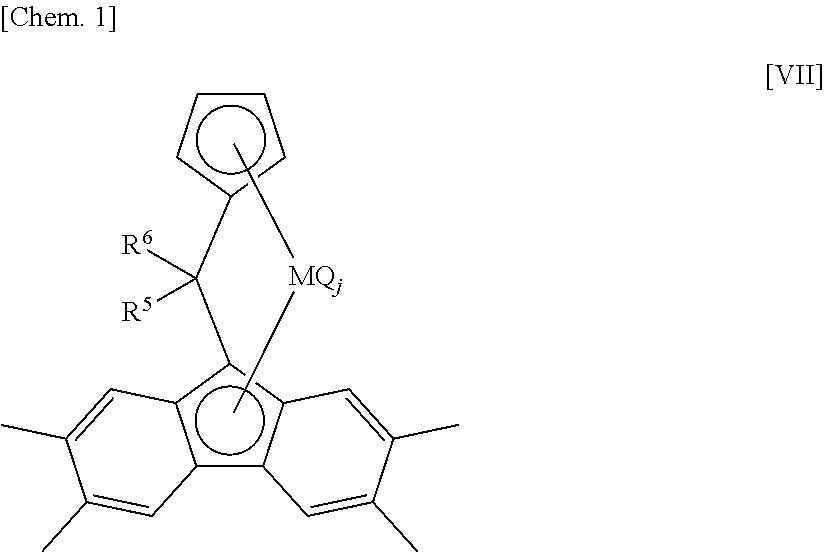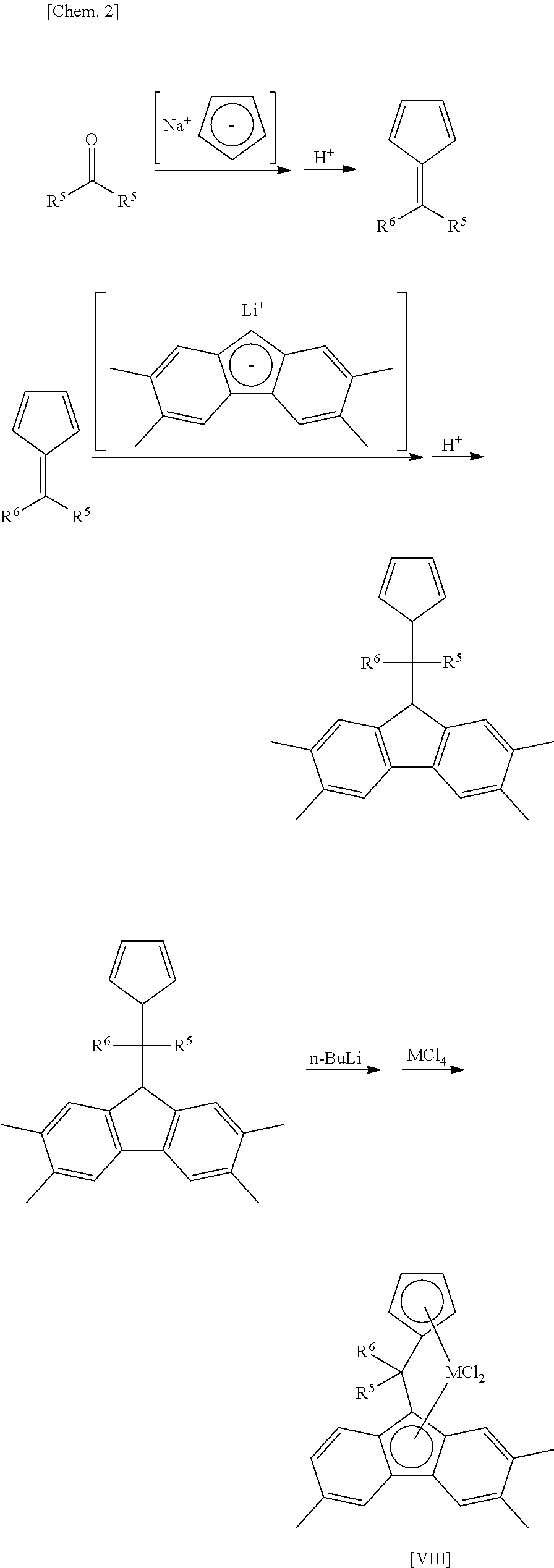Thermoplastic elastomer composition and method for producing same
a technology of thermoplastic elastomers and compositions, applied in the field of thermoplastic elastomer compositions, can solve the problems of inferior tensile strength, fracture elongation, compression set, etc., and achieve excellent mechanical properties, and excellent low-temperature impact resistance.
- Summary
- Abstract
- Description
- Claims
- Application Information
AI Technical Summary
Benefits of technology
Problems solved by technology
Method used
Image
Examples
manufacturing example 1
(B-1) Ethylene.1-butene.5-ethylidene-2-norbornene Copolymer (EBDM-1)
[0261]Using a polymerization reactor having a volume of 300 L and provided with a mixing blade, the polymerization reaction of ethylene, 1-butene, and 5-ethylidene-2-norbornene (ENB) was carried out continuously at 95° C.
[0262]Hexane (feed amount: 32 L / h) was used as a polymerization solvent and continuously fed into the polymerization reactor so that the amount of feed of ethylene was 3.2 kg / h, the amount of feed of 1-butene was 12 kg / h, the amount of feed of ENB was 520 g / h, and the amount of feed of hydrogen was 0 N L / h (normal liter).
[0263]While the polymerization pressure and the polymerization temperature were maintained at 1.6 MPaG and 95° C. respectively, the catalyst-al was used as the main catalyst and fed continuously into the polymerization reactor in an amount of feed of 0.03.0 mmol / h. Additionally, (C6H5) 3CB (C6F5)4 (CB-3) as a cocatalyst in an amount of feed of 0.15 mmol / h and triisobutylaluminum (TI...
manufacturing example 2
(B-2) Ethylene.1-butene.5-ethylidene-2-norbornene Copolymer (EBDM-2)
[0267]EBDM-1, 100 parts by weight, obtained in Manufacturing Example 1 was oil-extended further with 10 parts by weight of DIANA PROCESS PW-100 to obtain an ethylene.1-butene.ENB copolymer (EBDM-2). The properties of the resulting EBDM-2 were measured in the method described above. The results are shown in Table 1.
manufacturing example 3
(b-1) Ethylene.propylene.5-ethylidene-2-norbornene Copolymer (EPDM-1)
[0268]Using a polymerization reactor having a volume of 300 L and provided with a mixing blade, the polymerization reaction of ethylene, propylene, and 5-ethylidene-2-norbornene (ENB) was carried out continuously at 80° C.
[0269]Hexane (feed amount: 26.8 L; h) was used as a polymerization solvent and continuously fed into the polymerization reactor so that the amount of feed of ethylene was 4.0 kg / h, the amount of feed of propylene was 5.2 kg / h, the amount of feed of ENB was 1.2 kg / h, and the amount of feed of hydrogen was 25 N L / h (normal liter).
[0270]While the polymerization pressure and the polymerization temperature were maintained at 2.1 MPaG and 80° C. respectively, [N-(1,1-dimethylethyl)-1,1-dimethyl-1-[(1, 2, 3, 3A, 8A-η)-1,5,6,7-tetrahydro-2-methyl-S-indacene-1-yl] silaneaminate (2-)-κN] [(1, 2, 3, 4-η)-1,3-pentadiene]-titanium was used as the main catalyst and fed continuously into the polymerization react...
PUM
| Property | Measurement | Unit |
|---|---|---|
| thermoplastic | aaaaa | aaaaa |
| mole fraction | aaaaa | aaaaa |
| molar ratio | aaaaa | aaaaa |
Abstract
Description
Claims
Application Information
 Login to View More
Login to View More - R&D
- Intellectual Property
- Life Sciences
- Materials
- Tech Scout
- Unparalleled Data Quality
- Higher Quality Content
- 60% Fewer Hallucinations
Browse by: Latest US Patents, China's latest patents, Technical Efficacy Thesaurus, Application Domain, Technology Topic, Popular Technical Reports.
© 2025 PatSnap. All rights reserved.Legal|Privacy policy|Modern Slavery Act Transparency Statement|Sitemap|About US| Contact US: help@patsnap.com



